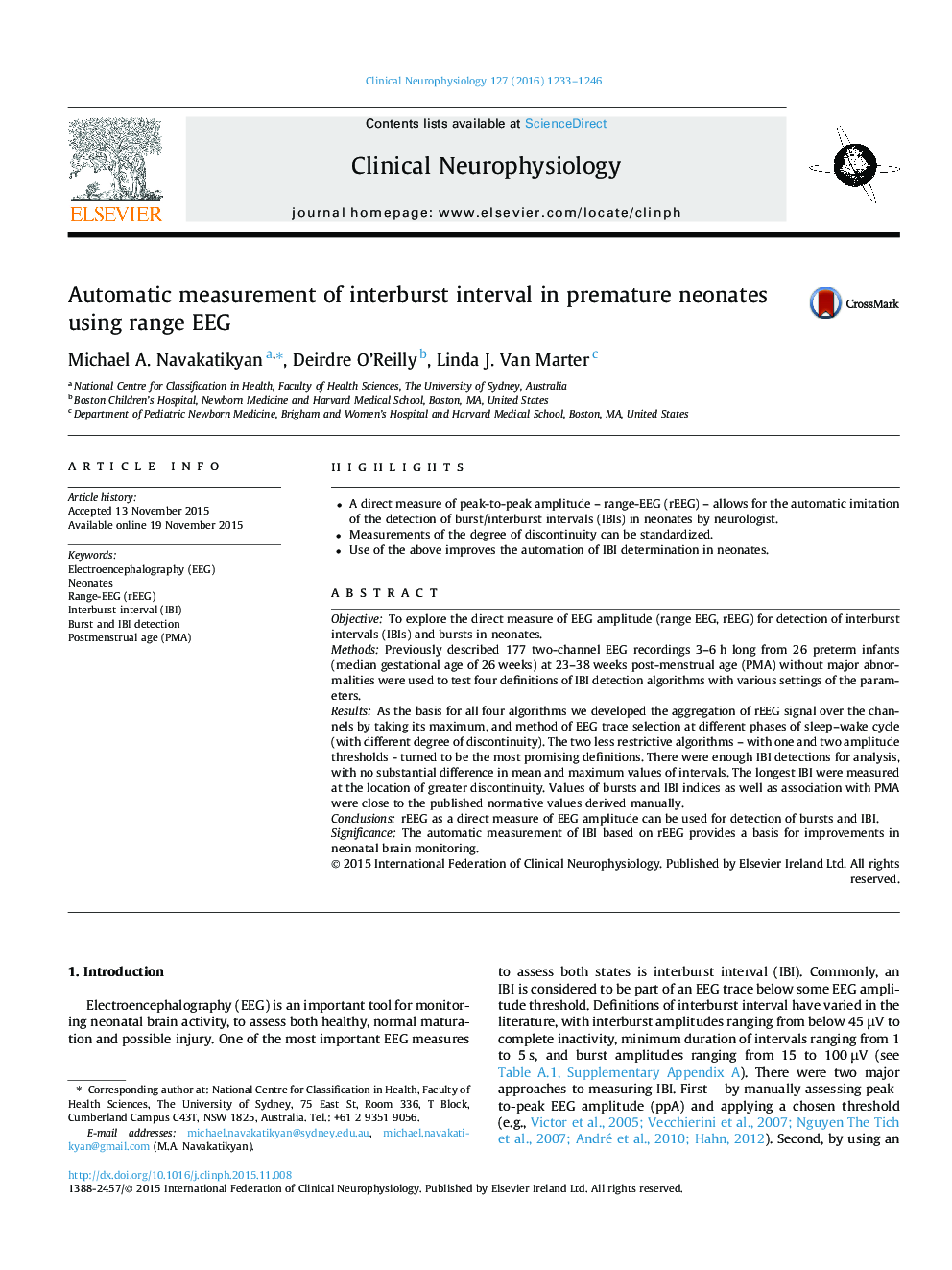| Article ID | Journal | Published Year | Pages | File Type |
|---|---|---|---|---|
| 6007559 | Clinical Neurophysiology | 2016 | 14 Pages |
â¢A direct measure of peak-to-peak amplitude - range-EEG (rEEG) - allows for the automatic imitation of the detection of burst/interburst intervals (IBIs) in neonates by neurologist.â¢Measurements of the degree of discontinuity can be standardized.â¢Use of the above improves the automation of IBI determination in neonates.
ObjectiveTo explore the direct measure of EEG amplitude (range EEG, rEEG) for detection of interburst intervals (IBIs) and bursts in neonates.MethodsPreviously described 177 two-channel EEG recordings 3-6Â h long from 26 preterm infants (median gestational age of 26Â weeks) at 23-38Â weeks post-menstrual age (PMA) without major abnormalities were used to test four definitions of IBI detection algorithms with various settings of the parameters.ResultsAs the basis for all four algorithms we developed the aggregation of rEEG signal over the channels by taking its maximum, and method of EEG trace selection at different phases of sleep-wake cycle (with different degree of discontinuity). The two less restrictive algorithms - with one and two amplitude thresholds - turned to be the most promising definitions. There were enough IBI detections for analysis, with no substantial difference in mean and maximum values of intervals. The longest IBI were measured at the location of greater discontinuity. Values of bursts and IBI indices as well as association with PMA were close to the published normative values derived manually.ConclusionsrEEG as a direct measure of EEG amplitude can be used for detection of bursts and IBI.SignificanceThe automatic measurement of IBI based on rEEG provides a basis for improvements in neonatal brain monitoring.
